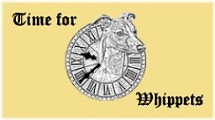
About us
| Steffen Brandt | |
|
|
Since
I was a small boy I wanted a dog. So I read every book and magazine on
dogs I could find in East Germany. And with each passing year my wish
became stronger, until at the age of 15 I got my first dog, Lester vom
Eifelturm, a male Dobermann. Lester
and I started doing Working and "Schutzhund" trials and I became
the youngest "Schutzhund" assistant to achieve vertification in
our federal state. I was now able to put into practice all the theoretical
knowledge I had learnt. Over the years I gained invaluable hands-on
experience and know-how. In interacting with a large variety of dogs, my
fascination with the role in the sport of the individual dog's
psychological make-up and personality grew. A
chance meeting with the Bullterrier breeder, Gisela Küchler (Musketier),
let me to assist her in many aspects. Although we were not co-breeders I
helped her show her dogs, accompanied her on numerous trips for matings
which were often based on nights of discussion and helped her whelp and
raise seven litters of pups. After the tragic loss of my Bullterrier male,
Wesley, and with the discussion in Germany on 'fighting dog' breeds, I
made a progression in my life and decided to look for another breed of
dog. After
all I had read about Whippets, was this the right breed for me. I
found all the positive attributes of the Bullterrier in the Whippet, but I
still didn't really like these "companions of the wind". But my
curiosity let me to attend Sighthound shows and I talked to owners and
visited breeders. Increasingly I came to realise that the Whippet was the
breed for me, and after two years I was the proud owner of my first
Whippet bitch, Latoya. And
today, Whippets of all ages are playing in our garden and each and every
one of them is very special to me. Everyday I am still impressed by their
robustness, independence and ability to be real dogs without attracting
attention. Before Latoya, no dog was allowed on my sofa (Wesley had his
own armchair), but within one hour Latoya had made herself at home on the
sofa. Whippets
are ever-so charming, but like every other breed of dog, they need to be
educated and taught about leadership. This is my life partnership
with them as I see it. |
| . | |
| Susan Eppenstein-Kiack | |
|
|
As
most children do, I always wanted a dog - even more so as my parents had a
Scottish Terrier when I was born. I delayed fulfilling my dream until I
"became an adult" and met my now ex-husband, Joachim Kiack (Almansor's),
in 1989. He owned four Whippets. I very soon learned the merits of this
wonderful breed. In
1990 I bought my first dog, Ch. Fly du Manoir de la Grenouillère, the
first dog I raised and educated. After a few years my first litter (G-litter
Almansor's) followed. During
this time I learned everything (standard, breeding, handling) from my
husband. I also came into contact with many Whippet breeders in
Germany and abroad with the building and structuring of the German Whippet
Club. Joachim was the manager for many years and later became the
president of the club while I did the editorial work for the club magazine
and developed the "Whippet Report" from a few stapled pages into
an interesting and approved magazine for everybody. In 2000 the club work
came to an abrupt end. Until
my separation, I was involved in the planning, mating, whelping, raising
and educating of 11 litters of Almansor's Whippets. It now gives me
immense pleasure to bring this know-how and experience to our kennel,
"Time for". |
| . | |
| What does "Time for" stands for? | |
|
|
"Time
for" has many meanings for us. It
is our opinion that one needs Time for the planning, raising
and educating of a litter of pups. But first one needs the insight into
why one wants to breed and what one wants to achieve with ones
breeding plans. Simply producing puppies and breeding with
cynological aspects are as different as chalk and cheese. We
take Time for breeding puppies with love,
excitement and enthusiasm. And the new owner must also realise that he
or she needs Time for this new life partner. Time to share many,
many happy hours together. It
is also the Time for Whippets to be bred according to the valid FCI
standard - the standard of England, the country of origin of the breed. It
is our opinion that many modern influences (especially those from the USA
which has its own valid standard) are not good for the breed. Too many
"hybrids" (Whippets that are mixtures of the English and
American standards) are winning in the showring, whilst the racing and
performance dogs which are in many ways more "typical Whippets"
than some of the successful show winners, are viewed with disdain and
pitying smiles. It
is Time for healthy Whippets with sound temperaments to be bred
according to the English standard. Whippets who will be real life
companions for their owners - and for that they don't need to share their
owner's bed to be true life partners. |
.